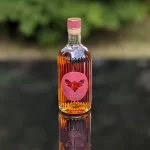Starting a Rum Collection: An Industry Expert’s Perspective
In the current spirits landscape, rum is emerging as a prominent contender. Its steadily growing market signals an ideal time to begin a collection. For the past decade, rum enthusiasts have fervently championed its potential, often meeting indifference from whiskey and gin aficionados. However, a July 2022 Spirits Business report revealed that rum sales in the UK exceeded $1.2 billion, surpassing whiskey in market share for the first time in modern history.
Financial Growth and Collection Potential
The global rum market’s value, as forecasted by Maximize Market Research, is expected to grow from $14.5 billion in 2022 to $20.2 billion by 2029. This growth is also reflected in retail sales, with a significant increase in demand for premium rums. Major beverage companies like Diageo and Brown-Forman have acquired smaller rum brands, bolstering their premium portfolios, suggesting a bright future for rum collecting.
The Diversity of Rum
Rum stands out for its diversity, with global production spanning from the Caribbean and South America to Asia and Africa. Variations in fermentation, distillation, and maturation methods, coupled with specific geographical regulations, offer a wide range of flavor profiles, making it a fascinating and complex world to explore.
Comparison with Whiskey
Although Scotch whisky offers some diversity, it pales in comparison to the broad spectrum of flavor profiles found in rum. Additionally, rum is notably more affordable than whiskey, despite the exceptional quality of many bottles on the market. Maturation in tropical climates gives rum an edge in terms of aging and flavor complexity.
Identifying Collectible Rums
Identifying collectible rums requires knowledge of certain key characteristics and prominent producers. Rums from extinct distilleries or no longer produced styles, as well as rums aged in tropical climates, are particularly valuable. Industry innovators like Luca Gargano of La Maison Velier have contributed to recognizing limited editions and distinctive rum features, akin to those that make whiskey appealing to collectors.
Selected Bottles and the Future of Rum
Notable examples of collectible rums include Black Tot Last Consignment and Appleton Estate’s 17-Year-Old Legend. The growing popularity of producers like Mount Gay, Appleton Estate, and Havana Club indicates a bright future for rum as a collectible.
The secondary market already shows a significant increase in prices for certain rums, suggesting that now is an opportune time to start a collection. The rum industry, learning from the success of whiskey and maintaining reasonable prices, is positioned for a promising future in the realm of collections.
Source: CEO Magazine





